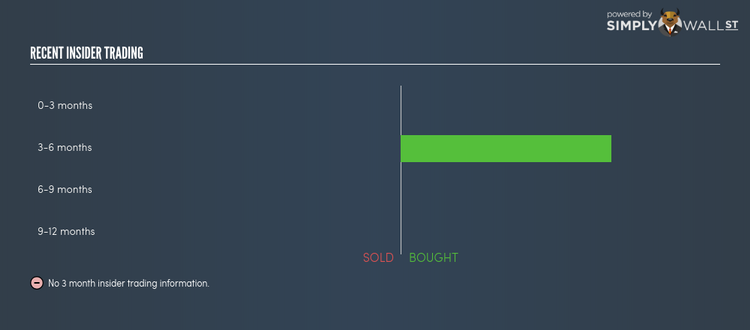Should You Be Concerned About Broken Hill Prospecting Limited’s (ASX:BPL) Shareholders?

I am going to take a deep dive into Broken Hill Prospecting Limited’s (ASX:BPL) most recent ownership structure, not a frequent subject of discussion among individual investors. The impact of a company’s ownership structure affects both its short- and long-term performance. Differences in ownership structure of companies can have a profound effect on how management’s incentives are aligned with shareholder returns, which is why we’ll take a moment to analyse BPL’s shareholder registry.
See our latest analysis for Broken Hill Prospecting
Institutional Ownership
Due to the big order sizes of institutional investors, a company’s shares can experience large, one-sided momentum, driven by high volume of shares removed from, or injected into, the market. With an institutional ownership of 3.33%, BPL doesn’t seem too exposed to higher volatility resulting from institutional trading.
Insider Ownership
Insiders form another group of important ownership types as they manage the company’s operations and decide the best use of capital. Insider ownership has been linked to better alignment between management and shareholders. BPL insiders hold a significant stake of 19.43% in the company. This level of insider ownership has been found to have a negative impact on companies with consistently low PE ratios (underperformers), while it has been positive in the case of high PE ratio firms (outperformers). Another aspect of insider ownership is to learn about their recent transactions. Insiders buying company shares can be a positive indicator of future performance, but a selling decision can simply be driven by personal financial needs.
General Public Ownership
A substantial ownership of 39.18% in BPL is held by the general public. With this size of ownership, retail investors can collectively play a role in major company policies that affect shareholders returns, including executive remuneration and the appointment of directors. They can also exercise the power to decline an acquisition or merger that may not improve profitability.
Private Company Ownership
Potential investors in BPL should also look at another important group of investors: private companies, with a stake of 38.06%, who are primarily invested because of strategic and capital gain interests. An ownership of this size indicates a strong financial backing and has the potential to influence BPL’s business strategy. Thus, investors should dig deeper into BPL’s business relations with these companies and how it can affect shareholder returns in the long-term.
Next Steps:
With a low level of institutional ownership, investors in BPL need not worry about non-fundamental factors such as ownership structure causing large impact on stock prices. However, ownership structure should not be the only focus of your research when constructing an investment thesis around BPL. Rather, you should be examining fundamental factors such as the intrinsic valuation, which is a key driver of Broken Hill Prospecting’s share price. I urge you to complete your research by taking a look at the following:
1. Financial Health: Is BPL’s operations financially sustainable? Balance sheets can be hard to analyze, which is why we’ve done it for you. Check out our financial health checks here.
2. Past Track Record: Has BPL been consistently performing well irrespective of the ups and downs in the market? Go into more detail in the past performance analysis and take a look at the free visual representations of BPL’s historicals for more clarity.
3. Other High-Performing Stocks: Are there other stocks that provide better prospects with proven track records? Explore our free list of these great stocks here.
NB: Figures in this article are calculated using data from the last twelve months, which refer to the 12-month period ending on the last date of the month the financial statement is dated. This may not be consistent with full year annual report figures.
To help readers see pass the short term volatility of the financial market, we aim to bring you a long-term focused research analysis purely driven by fundamental data. Note that our analysis does not factor in the latest price sensitive company announcements.
The author is an independent contributor and at the time of publication had no position in the stocks mentioned.


